Quality Led Headlights
Are LED Headlight Bulbs the Brightest? (we show you the best)
Most LED headlight bulbs are very dangerous! Not only are they not as bright as the original bulb, they scatter light everywhere and blind other traffic. So are there LED bulbs that do work? Let's find out.
The Trusty Halogen
First up. How good can the original halogen bulb be? For this test, we used an Audi A4 projector Headlight from the 2001 – 2005 model.
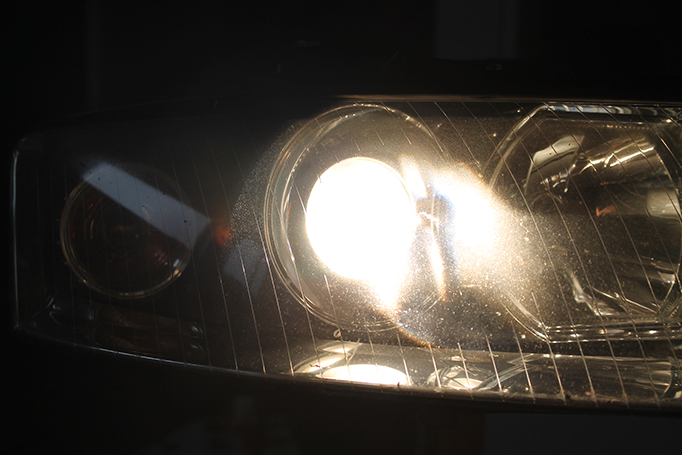
Taking an H7 bulb in the dipped beam we can first show you how bright an upgrade bulb is. For this, we used the OSRAM Night Breaker Laser +130% against a boarded-up office window.
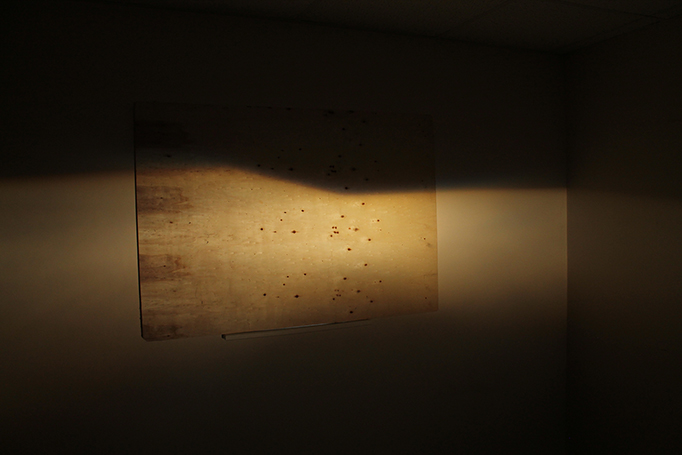
Excellent. Now to understand what makes this a good headlight we must label certain portions.
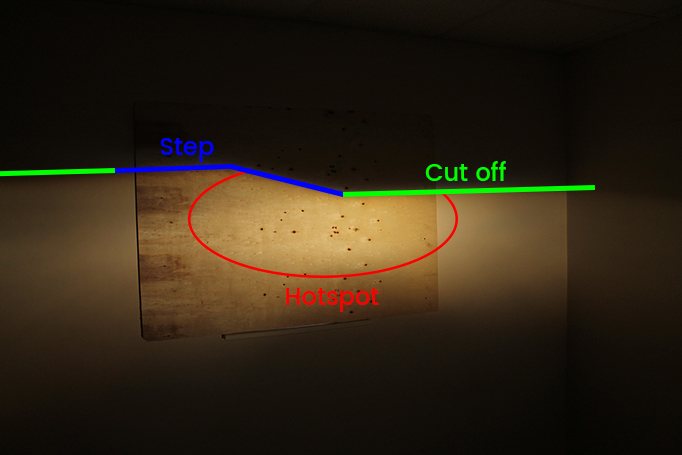
The Cut-Off
First up we have the cut-off. This is arguably one of the most important features of a dipped beam headlight and stops you blinding other traffic. Because this is a projector headlight it has a very defined cut-off. All dipped beam headlights have a cut-off but some are less sharp than others.
The Step
Then we have the step. The step is part of the cut-off and enables you to see further down your own side of the road without blinding the oncoming traffic. Because we drive on the left in the UK the cut-off is higher on the left. If this was a headlight unit from the rest of Europe or the USA the cut-off would be higher on the right.
The Hotspot
Finally we look at the hotspot. This is where the bulbs light is most concentrated and its position in relation to the cut-off is very important.
The job of a dipped beam headlight is to illuminate the road as far in front of the car as possible without blinding other traffic.
Often, people think a lot of light right in front of their car is a good thing, but it's actually counter-productive. The closer the light is to you the more your eyes close up to compensate, then your distance vision is reduced. This is similar to the effect of trying to look out your window in the dark from inside your house with the lights on. It's much easier to spot that thing outside with the lights off. For this reason some cars are wired to turn their fog lights off when the high beams turn on. Therefore we want the hotspot of the bulb to be as close to the cut off as possible.
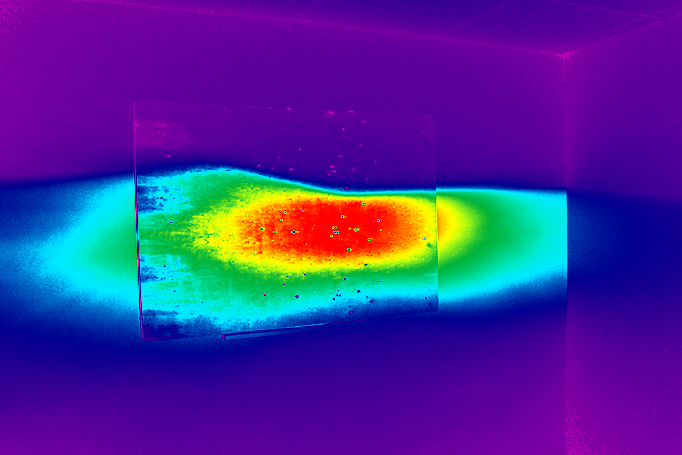
To make the hotspot easier to see we'll look at the light heat map. The red portions are the brightest and the blue/purple areas are where there's little to no light.
So what's the issue with LED then?
The Surge of LED Headlight Bulbs
Here we see an H7 LED headlight bulb for just £29.99 from Amazon or eBay…a bargain right?
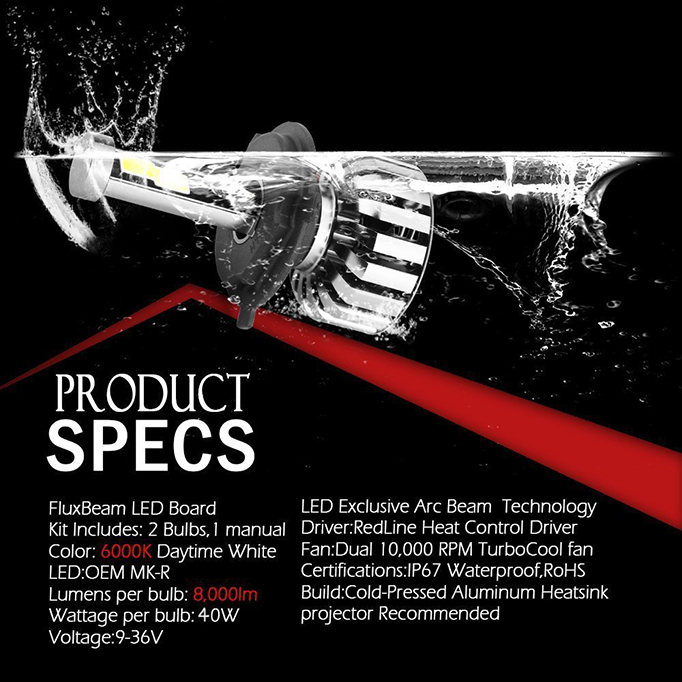
But is it really that easy? For just £29.99 can you have 8000 lumens PER BULB? The short answer is no.
The lumen claims are normally "calculated" based on the voltage they are running and not actually measured. But it's still not as simple as that. Lumen values are just a measure of the total light emitted, it gives no indication of where that light is going to end up in front of the car! You could have 8000 lumens from a bulb like that and none of it would end up on the road, as we'll explain.
We'll start with this, the common spotted "Cree LED Headlight". It's important to note that Cree as a brand don't make LED headlights, they make LED chips for all applications, mainly household LEDs. Don't get me wrong, Cree is one of the market leaders of LED chips, but in terms of creating an LED headlight that works, that is down to the lamp factory, not Cree.
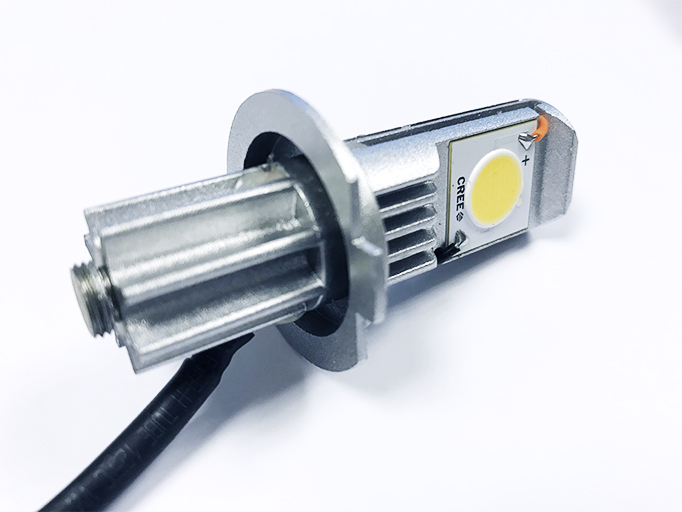
The problem with this bulb is immediately obvious when you compare it to the original halogen bulb. It may have the same shape base on it as the halogen bulb but the similarities end there. Just look at the size of the LED chip (the yellow bit) compared to the filament coil of the original halogen bulb. The light is not going to be anywhere near the correct place. But let's fit it and find out…
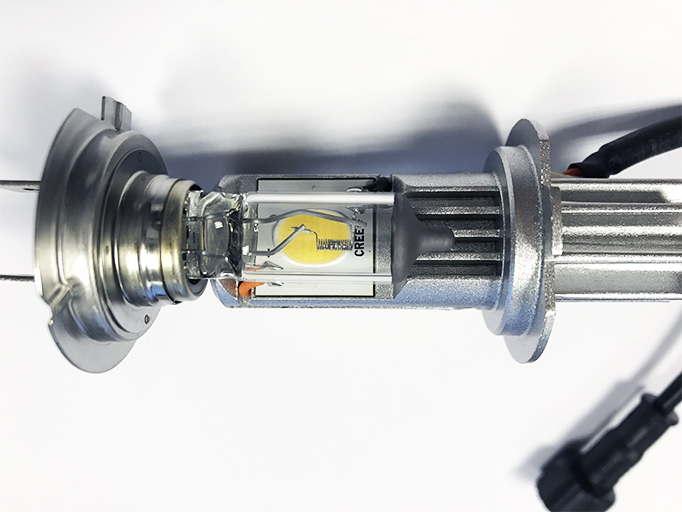
Oh, another fundamental flaw! Its' giant size meant that it couldn't physically fit in the opening of our projector headlight. That £29.99 bargain isn't looking quite so great now!
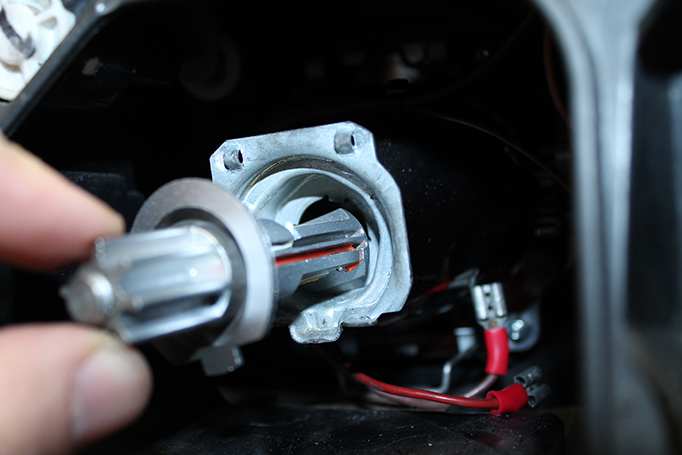
This size issue will apply to 99% of projector headlights and is a very important first hurdle for LED headlight bulbs to overcome. You can't use all of those extra lumens if the bulb won't actually fit. This also applied to our other Cree "big chip" LED.
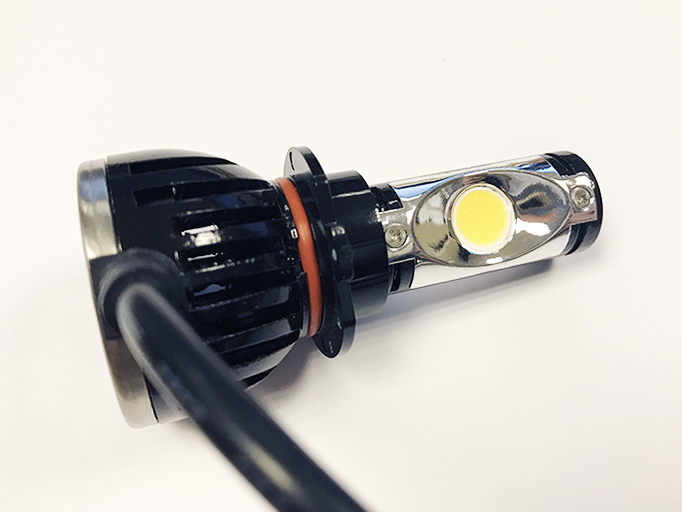
Eventually we found a headlight they'd fit in and this was the result…
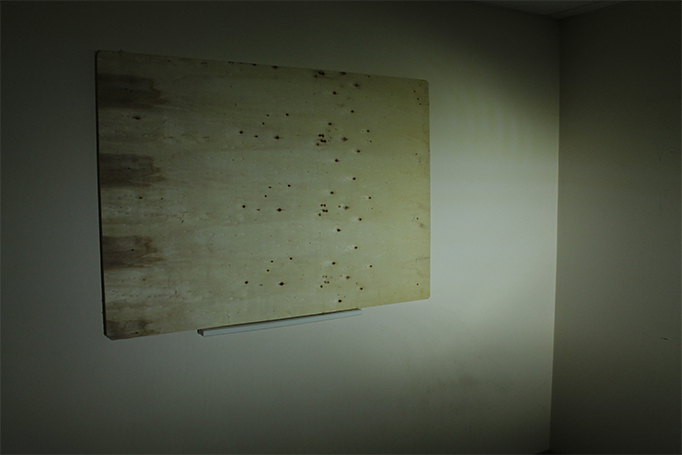
This was a dipped beam headlight so there should be all the things we labelled. A cut off, a step, a hotspot. But none of it is there, just a big blob of "glarey" unusable light. This is simply dangerous and should be avoided at all costs!
So let's move on to a style that's actually considered beam pattern.
Things Can Only Get Better!
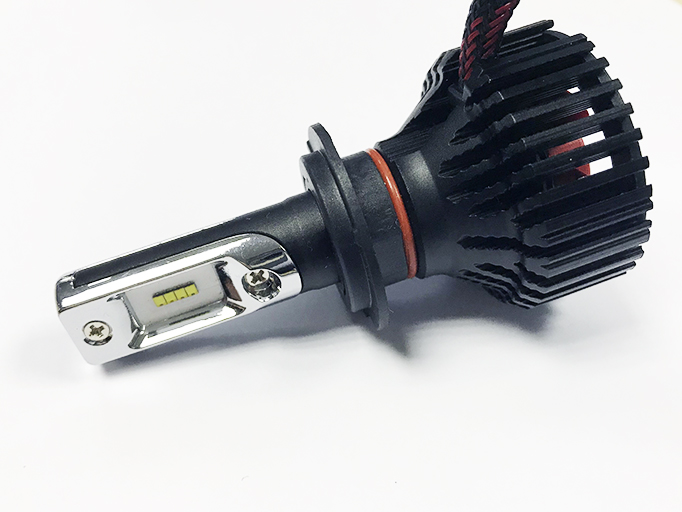
This is a new style and you can see the size of the LED chips have dramatically reduced and they are in the same place as the filament of the original bulb. This is the key to making these bulbs work. The place that the light comes from has to be in the same location; and the same size.
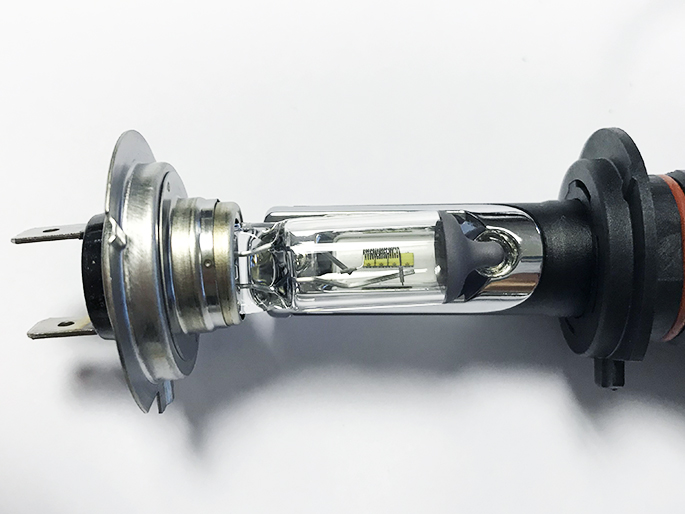
Headlights are very much designed to focus light from a point. If that point of light moves even slightly, in shape or size then the beam is distorted.
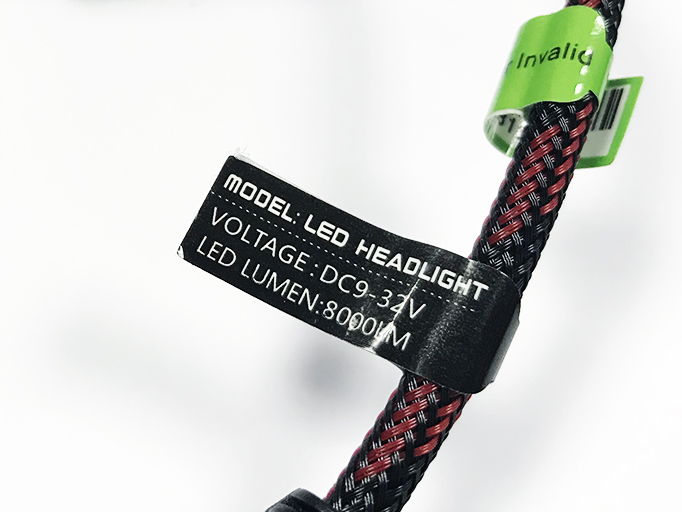
Even better, these bulbs claim 8000 lumens from each bulb too (it's that magic 8000 number again). The head of the bulb is just about small enough to fit, so let's see how bright they are:
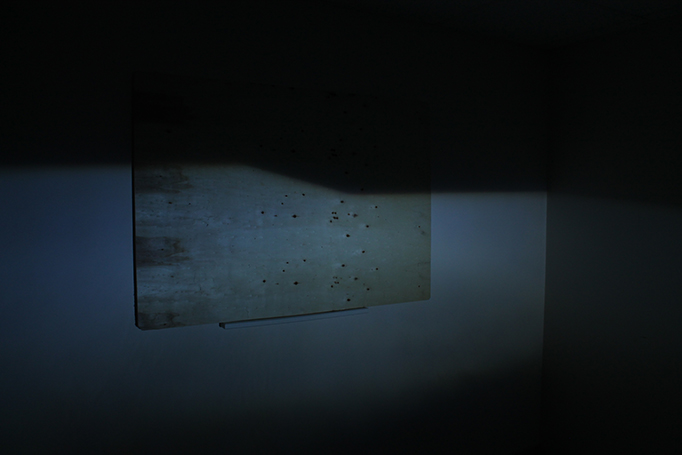
Hmm, just to be clear, the camera's settings were locked to the exact same exposure settings (I double and triple checked it!). This illustrates how pointless any kind of lumen claims the bulb makes. They can easily be pulled out of thin air.
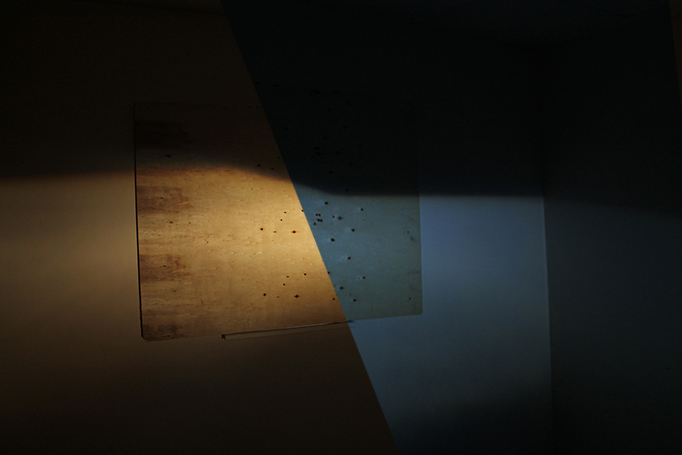
With a direct comparison, you can see just how much dimmer the 8000-lumen LED bulb really is. We've also lost a decent hotspot and ended up with more light at the bottom.
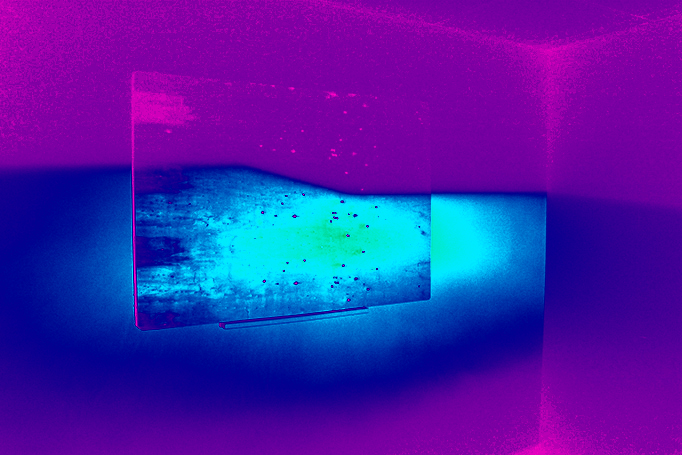
You can see from the effect that you would end up with less distance vision and far less brightness overall. We do have a cut-off and step though, so that's an improvement on the first ones we tried! Let's see if we can get any better.
LED There Be Light (finally)
Next up, our H7 Twenty20 LED
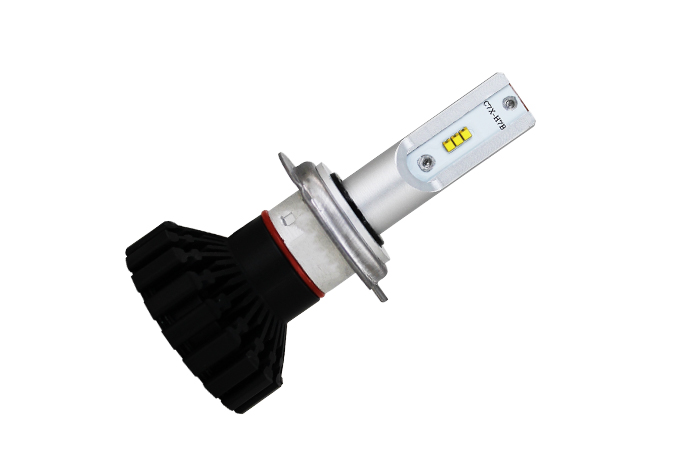
Again we have some very small LED chips but also a smaller top portion and a smaller fan and heat sink. This means they will fit much easier into the back of the headlights and won't get stuck on the bulb opening.
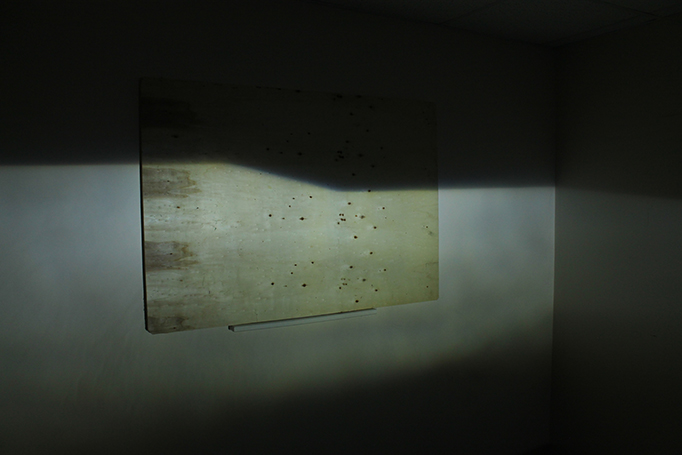
This time we've got a lot more light. No bogus lumen claims here, just a white bright light.
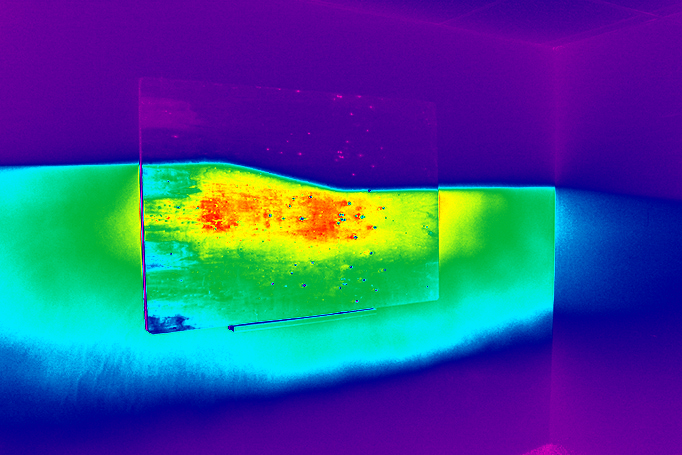
We've got far more of a hotspot this time than the 8000-lumen bulb. There's a lot more light up and across from our cut-off.
Although the hotspot hasn't got quite the same intensity as the original bulb, it's wider giving you more width in your vision. The hotspot is also higher, placing the light in a more useful area of the road. Giving you more light all across your beam pattern with a pure white colour, these LEDs are a nice upgrade.
The Ultinon LED Headlight Bulbs
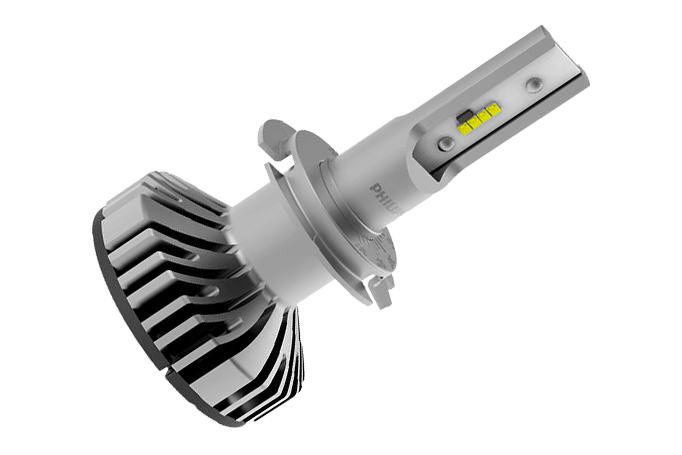
Last but definitely not least are the Philips Ultinon H7.
Philips owns most of Lumileds who produce LED chips, just like Cree. Philips saw the market for LED headlight bulbs and asked Lumileds to produce them an LED which is the same size as a halogen filament. That's exactly what they did, then Philips filled in the gaps making the H7 Ultinon bulb. So what you're seeing here is the original design, the blueprint if you will. Here is the output.
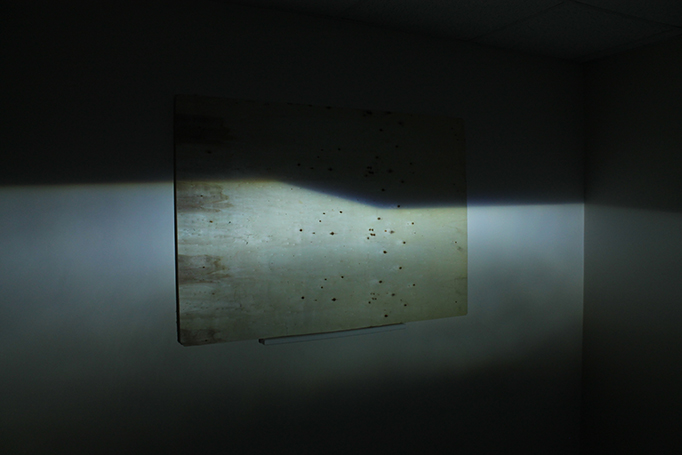
You can see it's the brightest of the 3 with the most light at the top and the least at the bottom. If we use our effect we can see how the hotspot has fared.
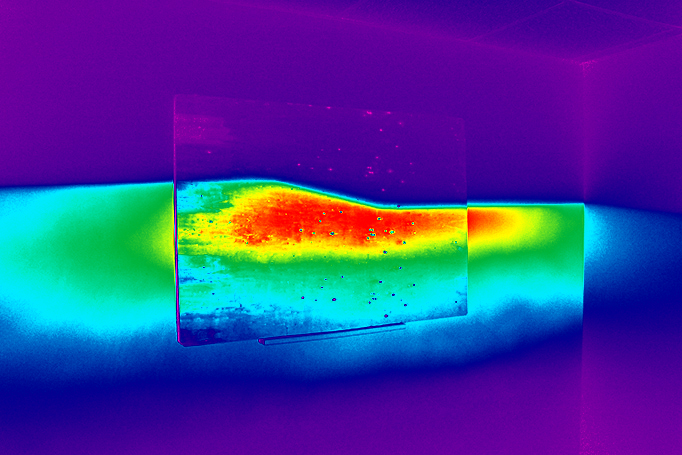
It still has the same intensity as the halogen bulb, but is wider and higher up on the cut off! Meaning you get significantly better distance vision. There's also more light to the sides and it sharpens up the cut-off.
With Philips clearly nailing the technology it begs the question, is LED the answer?
It depends. If your car holds its' bulb in by a metal clip or a metal twist bracket then you're fine. But a lot of cars these days (especially the VW's) hold their bulbs in a more unique way.
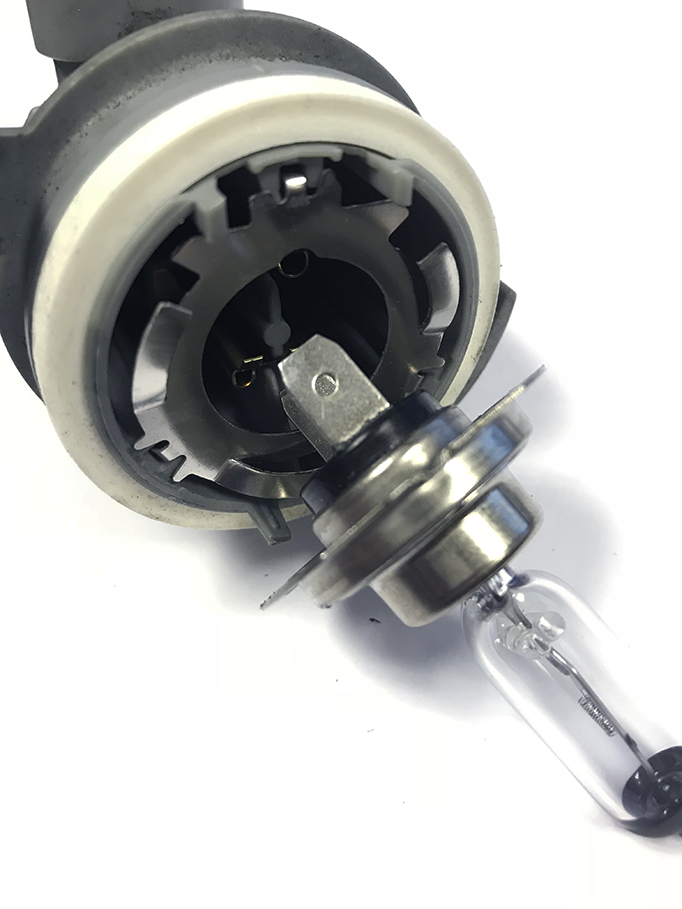
Essentially slotting the tabs of the H7 into the holder. The LED bulbs don't have tabs and therefore won't be compatible with these holders, so it's important to check your holder type before you take the plunge.
LED headlight technology has moved on in leaps and bounds over the last few years, but there's still a lot out there to consider to ensure you actually get a decent upgrade. Make sure you do your research and don't necessarily believe everything that's claimed.
Conclusion
After all of our testing (and being in the automotive lighting industry for nearly 20 years) we can confirm that LED bulbs are not the brightest bulb on the market. At least not yet anyway.
LED is a progressive technology and while they are still up to 300% brighter than standard halogen lights, HID Kits are by far much brighter than any other upgrade bulbs available. You can find more information about HID bulbs in our simple car bulb guide (HID).
The technology surrounding LED bulbs still has quite a ways to go to be the absolute best however if you consider the fact that LED headlights can last 5 years longer than any other bulb type and they still produce a clean, white and 300% brighter light – they are definitely a force to be reckoned with.
Author:
Source: https://www.autobulbsdirect.co.uk/blog/are-led-headlight-bulbs-the-brightest/

0 Komentar